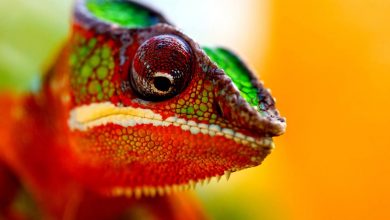The Fascinating World of Domestic Cats
From ancient Egyptian temples to modern-day homes, the cat (Felis catus) has captivated and charmed humans for thousands of years. Known for their grace, agility, and independence, cats have been revered as sacred beings, hunted as pests, and adored as beloved companions throughout history. As one of the most popular pets in the world, cats come in a variety of breeds, each with their own distinct personalities and physical traits. From the elegant Siamese to the fluffy Maine Coon, cats have a way of stealing our hearts with their playful antics, soothing purrs, and quirky behaviors.
But there’s much more to these fascinating felines than meets the eye. Did you know that cats are highly skilled hunters, capable of taking down prey several times their size? Or that they have a keen sense of hearing, able to detect sounds up to three times higher than humans can hear?
In addition to their natural abilities, cats have also played important roles in human history and culture. From the ancient Egyptian goddess Bastet to the internet sensation Grumpy Cat, cats have been revered, worshipped, and celebrated in art, literature, and mythology.
But despite their popularity, cats still remain somewhat of a mystery to us humans. Their aloofness and independence often leave us wondering what goes on inside their furry little heads. Do they really love us, or are they just using us for food and shelter?
In this article, we’ll take a closer look at the fascinating world of cats, exploring their biology, behavior, and history. From the science of cat genetics to the psychology of cat-human relationships, we’ll delve deep into the mysterious world of these beloved pets, uncovering the secrets and wonders of Felis catus.
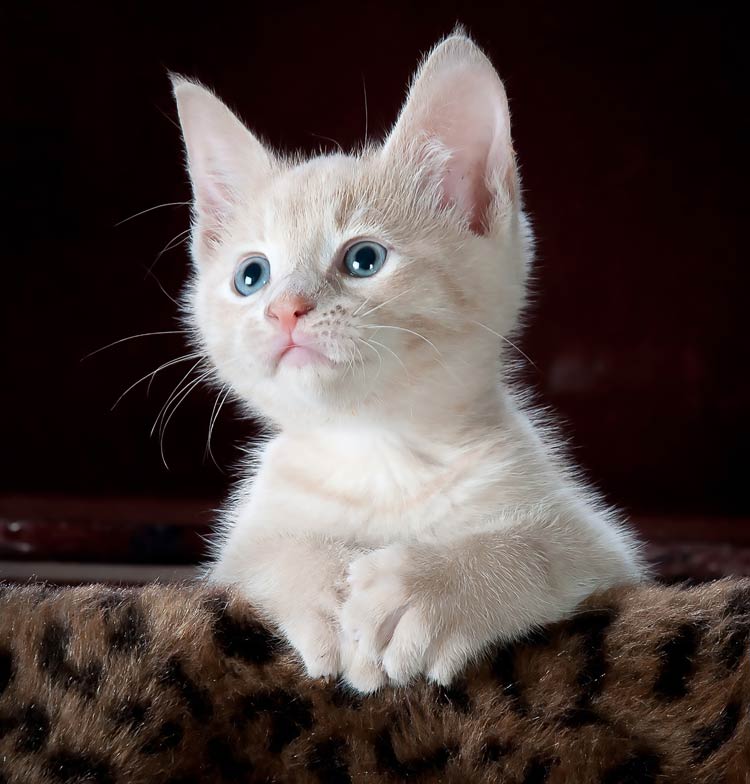
Descriptions
The cat (Felis catus) is a small carnivorous mammal that belongs to the Felidae family. They are known for their sharp retractable claws, powerful muscles, and keen senses, which make them skilled hunters and agile climbers. Adult cats typically weigh between 2.5-7 kg (5.5-15.4 lbs) and stand about 23-25 cm (9-10 inches) tall at the shoulder.
Cats have a distinctive appearance, with a slender, flexible body, long whiskers, and a pointed snout. They have excellent eyesight, hearing, and sense of smell, which help them to detect and catch prey. Their fur comes in a wide range of colors and patterns, and they use their tails to communicate their mood and intentions.
Cats are primarily solitary animals, but they are also social creatures that form strong bonds with their owners and other cats. They communicate with each other through vocalizations, body language, and scent marking. They are also known for their grooming behavior, which not only keeps them clean but also strengthens their social bonds with other cats.
As domesticated animals, cats have been bred for a variety of purposes, from companionship to pest control. They are popular pets around the world, and their personalities can vary widely depending on their breed and individual temperament. Some cats are affectionate and outgoing, while others are more independent and aloof.
The cat is a fascinating and complex animal that has captured the hearts of humans for thousands of years. Whether as a loyal companion or a skilled hunter, the cat’s grace, agility, and intelligence continue to amaze and delight us.

Taxonomy
The domestic cat (Felis catus) belongs to the Felidae family, which includes all members of the cat family. This family is part of the Carnivora order, which includes all carnivorous mammals.
The Felidae family is divided into two subfamilies: Pantherinae (which includes big cats such as lions, tigers, and leopards) and Felinae (which includes smaller cats such as domestic cats, lynxes, and ocelots). The domestic cat belongs to the Felinae subfamily.
The Felinae subfamily is further divided into 14 genera, one of which is Felis. The genus Felis includes four small cat species: the African wildcat (Felis lybica), the European wildcat (Felis silvestris), the jungle cat (Felis chaus), and the domestic cat (Felis catus).
The domestic cat (Felis catus) is then further divided into various breeds based on their specific physical and behavioral characteristics. These breeds are not considered taxonomic groups in the same way that genera and species are, but they are recognized by various cat breed organizations and have specific breed standards.
The taxonomy of the domestic cat (Felis catus) places it within the Felidae family, Felinae subfamily, Felis genus, and domestic cat species.
Scientific classification
- Kingdom: Animalia
- Phylum: Chordata
- Class: Mammalia
- Order: Carnivora
- Suborder: Feliformia
- Family: Felidae
- Subfamily: Felinae
- Genus: Felis
- Species: Felis catus

Basic Facts About Domestic Cat (Felis catus)
- Domestic cats are small carnivorous mammals that belong to the Felidae family and Felis genus.
- They are one of the most popular pets in the world, with an estimated population of over 500 million cats.
- Domestic cats have a lifespan of around 12-16 years, although some can live well into their 20s.
- They come in a wide range of colors and patterns, from solid black or white to striped or spotted coats.
- Cats are known for their sharp retractable claws, powerful muscles, and keen senses, which make them skilled hunters and agile climbers.
- They are primarily solitary animals but can form strong bonds with their owners and other cats.
- Cats communicate through vocalizations, body language, and scent marking.
- They are obligate carnivores, meaning that their diet consists almost exclusively of meat.
- Domestic cats are known for their grooming behavior, which not only keeps them clean but also strengthens their social bonds with other cats.
- They are territorial animals and use scent markings to establish and defend their territory.
- Cats are capable of purring, which is believed to be a sign of contentment and relaxation.
- They are also known for their playful behavior, which helps them to develop their physical and cognitive abilities.
- Domestic cats are adaptable and can thrive in a variety of environments, from small apartments to rural areas.

Evolution of the domestic cat
The domestic cat (Felis catus) is believed to have evolved from wild cats in the Near East region of the world, about 10,000 years ago. The earliest evidence of domesticated cats comes from archaeological sites in Cyprus and the Near East, where cats were likely attracted to human settlements due to the availability of rodents and other prey.
Over time, these cats developed a closer relationship with humans and began to be selectively bred for specific traits. Some early breeds of domestic cats were developed for their hunting skills, while others were bred for their friendly and social behavior.
One of the most significant events in the evolution of the domestic cat was the development of agriculture. As humans began to settle in one place and grow crops, rodents and other pests became a significant problem. Domesticated cats were highly effective at controlling these pests and quickly became valued members of human households.
The breeding of domestic cats continued throughout the centuries, leading to the development of many different breeds with a wide range of physical and behavioral characteristics. Some breeds were developed for their distinctive appearance, such as the Persian cat with its long, luxurious coat. Others were bred for their unique behavior, such as the Siamese cat with its vocal and interactive personality.
Today, domestic cats are one of the most popular pets in the world and have a close relationship with their human owners. However, they still retain many of their natural instincts and behaviors, such as hunting and territorial marking. The evolution of the domestic cat is an ongoing process, as breeders continue to develop new and unique cat breeds with a wide range of characteristics.
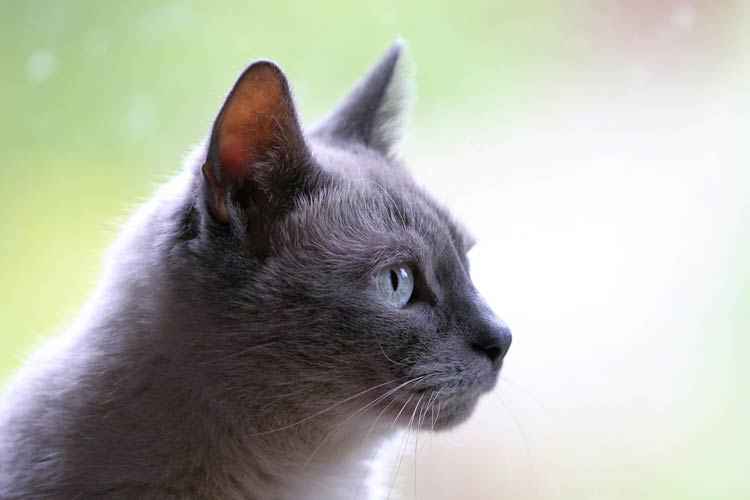
Domestication of the domestic cat
The domestic cat (Felis catus) is believed to have been domesticated around 10,000 years ago in the Near East region of the world. It is thought that cats were attracted to human settlements due to the abundance of rodents and other prey that were drawn to the food stores of early human settlements. Over time, cats became more accustomed to human presence and developed a closer relationship with humans.
The process of domestication was gradual and likely involved a combination of natural selection and human intervention. Cats that were more tolerant of human presence and less fearful of humans would have been more likely to survive and reproduce, leading to the gradual evolution of cats that were more comfortable around humans.
Over time, humans began to selectively breed cats for specific traits, such as their hunting skills or their friendly and social behavior. This selective breeding process led to the development of different cat breeds with a wide range of physical and behavioral characteristics.
Domesticated cats have a very different lifestyle from their wild counterparts. Domestic cats are typically fed by their human owners and do not need to hunt for their food. They also live in a much smaller territory than wild cats and have a close relationship with their human owners.
However, domesticated cats still retain many of their natural instincts and behaviors, such as hunting and territorial marking. They also have a similar social structure to wild cats, with a hierarchy among members of a group of cats.
Overall, the domestication of the cat was a gradual process that occurred over thousands of years. Today, domesticated cats are one of the most popular pets in the world and have a close relationship with their human owners.

Characteristics
Appearance and Size
Domestic cats (Felis catus) come in a wide range of sizes, shapes, colors, and patterns. However, there are some common physical characteristics that are shared among most domestic cats. Here are some general descriptions of their appearance:
- Size
Domestic cats vary in size, but most weigh between 4 and 5 kilograms (9-11 pounds) and stand about 23-25 centimeters (9-10 inches) tall at the shoulder. - Body
They have a compact and muscular body with a flexible spine, allowing them to twist and turn easily. Their legs are relatively short, and their paws have sharp retractable claws for hunting and climbing. - Head
Their head is rounded with a short snout and large eyes, giving them excellent vision, especially in low light conditions. Their ears are upright and sensitive to sounds and movements. - Coat
Domestic cats have soft and dense fur that can be short or long, depending on the breed. They come in a variety of colors and patterns, including solid colors (such as black, white, and gray), bi-colored (such as tuxedo cats), and multi-colored (such as calico cats). Some breeds also have unique coat characteristics, such as curly hair or hairless skin. - Tail
They have long and flexible tail that helps them to balance and communicate with other cats.
Overall, the domestic cat’s appearance is highly adaptable and varies widely based on breed, genetics, and environment. However, they share many physical characteristics that have helped them to thrive as both hunters and beloved pets.

Senses
Domestic cats (Felis catus) have highly developed senses, which allow them to effectively navigate their environment and hunt prey. Here is a breakdown of their senses:
- Vision
Domestic cats have excellent vision, especially in low-light conditions. Their eyes are large and round, and they have a reflective layer at the back of their eyes, called the tapetum lucidum, which enhances their ability to see in the dark. They also have a wider field of vision than humans, which helps them to track prey and detect potential predators. - Hearing
Domestic cats have highly sensitive ears that can detect a wide range of sounds. They are able to hear higher frequencies than humans, and can also locate the source of a sound with great accuracy. This allows them to track prey, communicate with other cats, and detect potential threats. - Smell
Domestic cats have a keen sense of smell that helps them to identify prey and navigate their environment. Their sense of smell is much more developed than humans, and they are able to detect scents that are undetectable to us. This ability also allows them to mark their territory and communicate with other cats through scent. - Taste
Domestic cats have a relatively limited sense of taste compared to humans. They have fewer taste buds and are not able to taste sweet flavors. However, they are very sensitive to bitter and sour flavors, which helps them to avoid toxic plants and other dangerous substances.

Whiskers
Whiskers, also known as vibrissae, are a unique feature of the domestic cat (Felis catus). These specialized hairs are longer and stiffer than the other hairs on a cat’s body and are located on the upper lip, cheeks, and eyebrows.
Whiskers are highly sensitive and are used by cats to navigate their environment and detect prey. They are able to detect changes in air currents and movements, which allows cats to perceive objects and animals in the dark or low-light conditions.
In addition to aiding in navigation and hunting, whiskers also play an important role in communication for cats. When a cat is feeling threatened or agitated, it may flatten its whiskers against its face. Conversely, when a cat is feeling relaxed and content, its whiskers may be slightly fanned outwards.
It’s important to note that whiskers are not just a decorative feature of cats, and they should not be trimmed or removed unless medically necessary. Cutting or removing a cat’s whiskers can cause discomfort and disorientation, and can also interfere with the cat’s ability to navigate and communicate effectively.

Behavior and Lifestyle
Cats (Felis catus) are known for their unique and often mysterious behavior. They are independent animals that have evolved to be both predator and prey, and their behavior is shaped by their natural instincts as well as their social and environmental experiences.
One of the most distinctive features of cat behavior is their hunting instinct. Cats are natural predators and are skilled hunters, with sharp claws, teeth, and excellent stalking skills. Even domesticated cats still retain their hunting instincts and will often chase and catch small prey such as mice or birds.
Cats are also known for their fastidious grooming habits. They spend a significant amount of time grooming themselves and each other, which helps to keep their fur clean and free of parasites. This behavior also helps to strengthen social bonds among cats.
Cats are generally solitary animals, but they can be social with other cats as well as humans. They communicate with each other using a variety of vocalizations, body language, and scent marking. They may also engage in play behavior, such as chasing and pouncing on toys or other objects.
Cats are also known for their territorial behavior. They may mark their territory by scratching, rubbing, or spraying, and may become aggressive towards other cats or animals that encroach on their territory.
Finally, cats are creatures of habit and routine. They may become stressed or anxious when their routine is disrupted, and may exhibit behavioral problems such as litter box avoidance or destructive behavior. Providing cats with a consistent routine and environment can help to promote their health and well-being.

Sociability
Cats (Felis catus) are often thought of as independent animals, but they can be social with other cats as well as humans. Some cats may be more social than others, but most cats benefit from social interaction to some degree.
Cats are social animals in the sense that they can form close relationships with other cats, especially if they are raised together from a young age. They may engage in play behavior, grooming, and sleeping together, which helps to strengthen social bonds.
Cats can also form close bonds with humans, especially if they are provided with consistent and positive social interaction. They may seek out human attention and affection, and may even show signs of separation anxiety when their owner is away for extended periods of time.
However, cats are not as social as dogs and may not require as much social interaction to be happy and healthy. They can be content spending time alone, as long as they have access to food, water, and a comfortable place to rest.
It’s important for cat owners to provide their cats with opportunities for social interaction, but to also respect their cat’s individual personality and preferences. Some cats may prefer to have more alone time, while others may crave attention and affection. Providing a safe and comfortable environment, along with regular social interaction, can help to promote a happy and healthy cat.
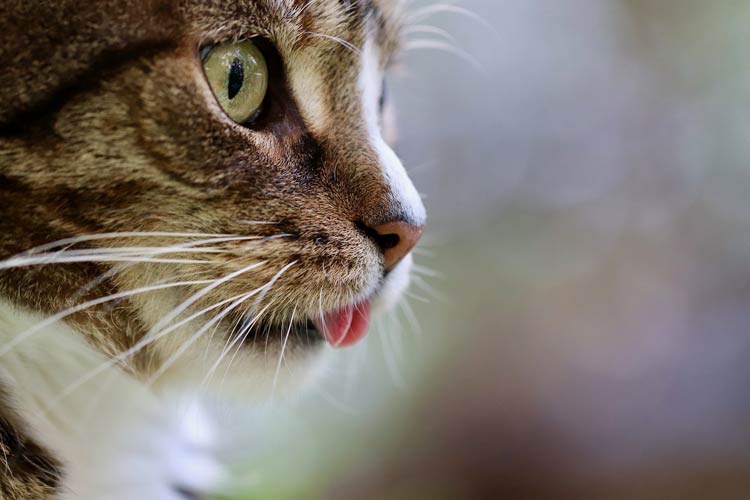
Cat communication
Cats (Felis catus) communicate with each other using a variety of vocalizations, body language, and scent marking. They use these different forms of communication to convey a range of messages, from greetings to warnings to territorial claims.
One of the most common forms of cat communication is vocalization. Cats can make a variety of sounds, including meowing, purring, hissing, growling, and yowling. Each vocalization has a different meaning and is used in different situations. For example, cats may meow to greet their owners or to ask for food, while hissing and growling are signs of aggression or fear.
Cats also use body language to communicate with each other and with humans. They may use their tails, ears, and body posture to convey different messages. For example, a cat with an arched back and puffed-up tail is likely feeling threatened or aggressive, while a cat with relaxed ears and a relaxed body posture is likely feeling content and relaxed.
Scent marking is another important form of cat communication. Cats have scent glands located on their face, paws, and tail, and they may rub these areas against objects or other animals to leave their scent and mark their territory. They may also urinate or defecate in certain areas to mark their territory with their scent.
Understanding cat communication is important for cat owners, as it can help them to better understand their cat’s behavior and needs. By paying attention to their cat’s vocalizations, body language, and scent marking, cat owners can better communicate with their cats and provide them with a comfortable and safe environment.
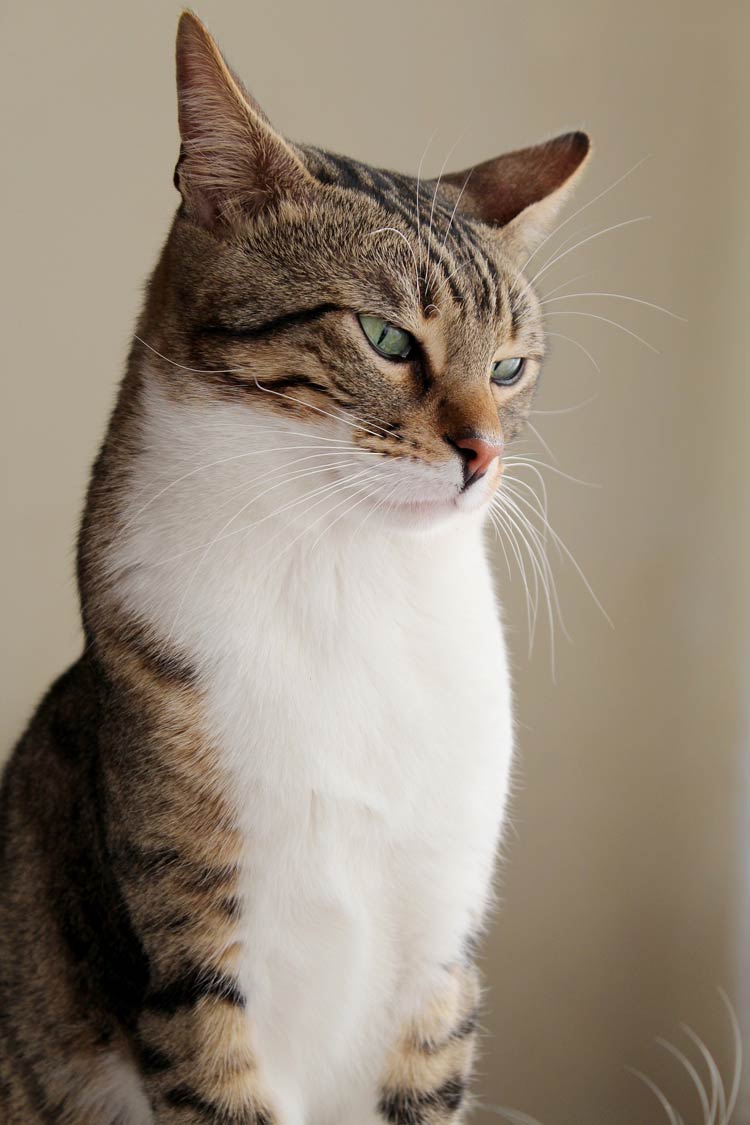
Fighting
Fighting is a common behavior in cats (Felis catus), especially among outdoor cats or cats living in multi-cat households. Fighting may occur between two cats of the same household or between cats from different households.
Cats may fight for a variety of reasons, including territorial disputes, mating competition, and resource guarding. Fighting can result in injuries to the cats involved, as well as damage to household property.
It’s important for cat owners to understand the reasons behind cat fighting and take steps to prevent it. Providing each cat with its own space and resources, such as food bowls and litter boxes, can help to prevent resource guarding and territorial disputes.
Spaying or neutering cats can also help to reduce fighting, as it can decrease the hormones that drive mating competition and aggressive behavior.
If cat fighting does occur, it’s important to intervene and separate the cats to prevent further injury. Owners should avoid physically intervening in the fight, as this can put them at risk of injury. Instead, loud noises or spraying water can be used to distract the cats and break up the fight.
In some cases, professional help from a veterinarian or animal behaviorist may be necessary to address ongoing issues with cat fighting. Overall, prevention and early intervention are key to managing cat fighting and promoting a safe and peaceful living environment for cats.

Diet
The domestic cat (Felis catus) is an obligate carnivore, which means that its diet must consist of animal-based protein to meet its nutritional requirements. In the wild, cats primarily eat small prey, such as rodents, birds, and insects.
In a domestic setting, cats are typically fed commercial cat food that is formulated to provide them with the necessary nutrients. These cat foods come in various forms, including dry kibble and wet canned food. Some cat owners choose to feed their cats a homemade or raw food diet, but it’s important to ensure that the diet is balanced and meets the cat’s nutritional needs.
Cats require a diet that is high in protein, moderate in fat, and low in carbohydrates. They also require certain vitamins and minerals, such as taurine and vitamin A, that are essential for their health.
It’s important for cat owners to provide their cats with a balanced and complete diet to prevent nutritional deficiencies and health problems. Overfeeding can lead to obesity and other health problems, while underfeeding can lead to malnutrition and other health problems.
Cats also require access to fresh, clean water at all times. Dehydration can be a serious problem for cats and can lead to urinary tract problems and other health issues.
Overall, providing a high-quality and balanced diet is essential for maintaining the health and well-being of domestic cats. It’s important for cat owners to consult with their veterinarian to ensure that their cat’s dietary needs are being met.

Hunting
Hunting is a natural behavior for cats (Felis catus), and even domesticated cats retain this instinct to some extent. In the wild, cats hunt for their food, primarily small prey such as rodents, birds, and insects.
Domestic cats may also exhibit hunting behavior, even if they are provided with a balanced diet. This behavior can include stalking, pouncing, and catching small objects, such as toys or insects.
Some cat owners may encourage hunting behavior by providing their cats with toys, such as stuffed mice or feathers attached to a string. These toys can simulate prey and provide a safe outlet for the cat’s hunting instincts.
While hunting behavior can be a natural and healthy form of exercise for cats, it’s important for owners to be aware of the potential dangers. Outdoor cats may be exposed to hazards such as traffic, predators, and toxic substances. Indoor cats may also be at risk of injury if they are allowed to play with small objects that could be swallowed or choke hazards.
Owners should supervise their cats during playtime and provide them with safe toys that are appropriate for their size and age. Additionally, it’s important to keep indoor cats entertained and stimulated with toys and activities to prevent boredom and destructive behavior.
Overall, while hunting behavior is a natural and healthy part of a cat’s instincts, owners should take steps to ensure that their cats are safe and healthy while engaging in this behavior.

Cat games
Playing is an important part of a cat’s (Felis catus) life and provides mental and physical stimulation. There are many games and activities that can help keep cats entertained and engaged.
One popular game is “chase the laser.” This involves shining a laser pointer on the floor or wall and letting the cat chase the dot. It’s important to note, however, that cats can become frustrated if they are never able to catch the elusive “prey,” so it’s important to provide a physical toy at the end of the game for the cat to “catch.”
Another popular game is “hide and seek.” This involves hiding treats or toys around the house for the cat to find. This game can help satisfy a cat’s natural hunting instincts and provide mental stimulation.
Interactive toys, such as puzzle feeders or treat dispensers, can also be a great way to keep cats entertained and mentally stimulated. These toys require the cat to use their problem-solving skills to access the reward.
Some cats enjoy playing with toys that allow them to engage in their natural hunting behaviors, such as stuffed mice or feathers attached to a string. These toys can be tossed, swung, or dragged along the floor to simulate prey and provide a safe outlet for the cat’s hunting instincts.
It’s important to supervise cats during playtime and provide them with safe toys that are appropriate for their size and age. Additionally, it’s important to rotate toys regularly to keep the cat interested and engaged.
Overall, playing games and engaging in activities with cats is a great way to bond with them and provide them with mental and physical stimulation.

Cat Impact on wildlife
Domestic cats (Felis catus) can have a significant impact on wildlife, particularly when they are allowed to roam freely outdoors. This is because cats are natural predators and are capable of hunting and killing small animals such as birds, rodents, and reptiles.
Studies have shown that domestic cats are responsible for a significant number of bird and small mammal deaths each year. In fact, a study by the American Bird Conservancy estimated that cats kill between 1.3 and 4 billion birds and between 6.3 and 22.3 billion mammals in the United States each year.
While cats are not solely responsible for declines in wildlife populations, they can contribute to the decline of certain species, particularly those that are already threatened or endangered. This is because cats can prey on animals that are important for maintaining the balance of ecosystems.
Owners can help reduce the impact of cats on wildlife by keeping them indoors or providing them with an outdoor enclosure. Additionally, spaying or neutering cats can help reduce the number of feral and stray cats, which can also have a significant impact on wildlife.
In areas where outdoor cats are a significant threat to wildlife, local governments and conservation organizations may implement policies to reduce the number of free-roaming cats, such as requiring cats to be kept indoors or implementing trap-neuter-return programs to control feral cat populations.
Overall, while cats can have a significant impact on wildlife, there are steps that can be taken to reduce this impact and ensure that cats and wildlife can coexist in a healthy and sustainable way.

Reproduction and parenting
The domestic cat (Felis catus) is a prolific breeder and can reach sexual maturity as early as 5-6 months of age. Female cats, or queens, typically go into heat (estrus) every 2-3 weeks during the breeding season, which typically occurs from late winter to early fall.
During estrus, the queen may become more vocal and affectionate, and may also spray urine to mark her territory. If she mates, the male cat will deposit semen in her reproductive tract, where it will fertilize the eggs.
The gestation period for cats is approximately 63-65 days. During this time, the queen will typically show signs of pregnancy, such as weight gain and enlarged nipples. As the due date approaches, she may become more restless and begin seeking out a nesting spot.
When it’s time to give birth, the queen will typically find a quiet, secluded spot to deliver her kittens. She will use her strong abdominal muscles to push out each kitten, and will then bite off the umbilical cord and clean the kitten to stimulate breathing.
After the kittens are born, the queen will typically nurse them for several weeks. During this time, she will provide them with milk and also help to keep them clean and warm. As the kittens grow, the queen will begin to wean them and teach them important social and hunting skills.
It’s important to note that there is an overpopulation of cats in many areas, and spaying and neutering cats can help to reduce the number of unwanted kittens and feral cat populations. Additionally, it’s important to provide proper care and socialization to kittens to ensure that they grow up.

Predators and Threats
Domestic cats (Felis catus) are generally well-protected by their owners and are not often targeted by predators. However, when cats are allowed to roam freely outdoors, they can be vulnerable to a variety of threats.
One of the biggest threats to outdoor cats is traffic. Cats can easily be hit by cars when they cross roads, particularly at night when their vision is not as sharp. In addition, outdoor cats can also be exposed to infectious diseases and parasites, which can be transmitted by contact with other cats, wildlife, or contaminated surfaces.
Cats can also be targeted by larger predators, particularly in areas where there are natural predators such as coyotes, foxes, or birds of prey. In such areas, outdoor cats are more likely to fall prey to these predators, particularly if they are young or inexperienced.
Another threat to cats is human activity, such as intentional or unintentional poisoning or trapping. Cats can also be subjected to cruelty or abuse by humans, particularly in areas where cats are viewed as pests or nuisances.
Owners can help protect their cats from these threats by keeping them indoors or providing them with a safe outdoor enclosure. Additionally, ensuring that cats are vaccinated and regularly treated for parasites can help reduce the risk of disease transmission.
Overall, while domestic cats are generally well-protected by their owners, outdoor cats can be vulnerable to a variety of threats. It’s important for cat owners to take steps to protect their cats and ensure their safety and well-being.

Population – How Many Cats Are In The World?
The global population of domestic cats (Felis catus) is estimated to be in the hundreds of millions. As of 2021, there were an estimated 220 million owned and 480 million stray cats in the world, it means 700 million cats in the world. Cats are one of the most popular pets in the world, with an estimated 95.6 million cats owned in the United States alone.
However, it’s important to note that not all cats are owned by humans. In many parts of the world, particularly in urban and suburban areas, there are large populations of feral and stray cats. These cats are not owned by anyone and live on the streets, often relying on human food sources such as garbage or handouts from kind-hearted individuals.
Feral and stray cats can pose a significant challenge to animal welfare organizations and local governments, particularly in areas where they are viewed as pests or nuisances. These cats can also contribute to the decline of wildlife populations, as they are often skilled hunters and can prey on small animals.
To address these issues, many organizations have implemented trap-neuter-return programs, which involve trapping feral cats, sterilizing them, and returning them to their original location. This helps control feral cat populations while also improving the overall welfare of these cats.
Overall, while domestic cats are one of the most popular pets in the world, there are also large populations of feral and stray cats in many areas. It’s important for individuals, organizations, and governments to work together to address the needs of these cats and ensure their welfare and the welfare of wildlife populations.
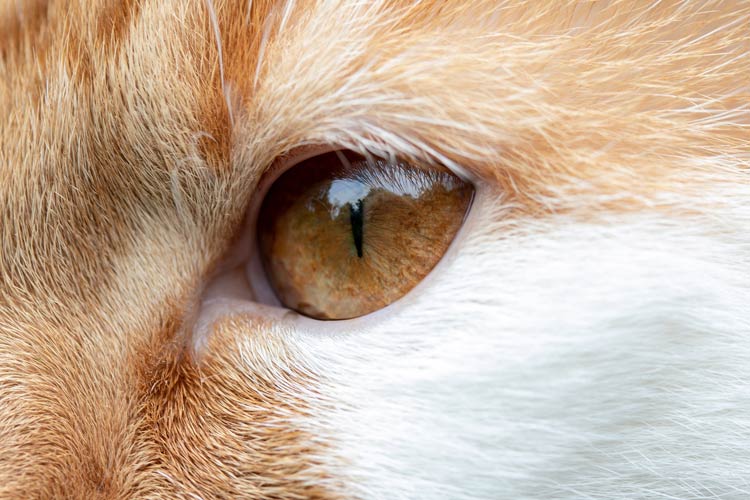
Lifespan, health, diseases of domestic cats
The lifespan of domestic cats varies, but on average they live between 12 to 15 years. However, with proper care, some cats can live into their late teens or even early twenties.
Cats are generally healthy animals, but like all animals, they are prone to certain diseases and conditions. Some of the most common health issues in cats include:
- Dental disease
Dental issues such as gingivitis, periodontal disease, and tooth decay are common in cats, particularly as they age. - Obesity
Obesity is a growing problem in cats, and can lead to a range of health problems such as diabetes, joint issues, and heart disease. - Urinary tract disease
Urinary tract infections, bladder stones, and other issues can cause pain and discomfort for cats, particularly male cats. - Feline Lower Urinary Tract Disease (FLUTD)
FLUTD is a common condition in cats that causes inflammation and blockage of the urinary tract, and can be life-threatening if not treated promptly. - Feline Infectious Peritonitis (FIP)
FIP is a viral disease that affects cats, and can lead to a range of symptoms such as fever, weight loss, and fluid accumulation in the abdomen. FIP is often fatal. - Feline Leukemia Virus (FeLV)
FeLV is a viral disease that can weaken a cat’s immune system and make them more susceptible to other infections.
To help prevent health problems, it’s important to provide your cat with a balanced diet, regular exercise, and routine veterinary care, including vaccinations and preventative treatments for parasites. Regular dental care, such as teeth brushing and regular dental cleanings by a veterinarian, can also help prevent dental disease.

Feral cats
Feral cats, also known as stray cats, are domestic cats that have either been abandoned or have strayed away from their homes and have reverted to living in the wild. These cats often live in groups called colonies, and can be found in both urban and rural areas.
Feral cats are different from wild cats, such as bobcats or cougars, in that they are domesticated animals that are capable of living on their own in the wild. While they may look similar to wild cats, feral cats are often smaller and less muscular.
Feral cats face many challenges in the wild, including a lack of access to food and water, exposure to the elements, and predation by other animals. In addition, they are often subject to human persecution, as some people view them as a nuisance or a threat to wildlife.
While feral cats can be difficult to tame, some are able to be socialized and adopted into homes. Others are cared for by individuals and organizations that provide food, shelter, and medical care to these animals in their colonies.
To address the problem of feral cats, many communities have implemented trap-neuter-return (TNR) programs, which involve trapping feral cats, spaying or neutering them, and returning them to their colonies. This helps to control the feral cat population and prevent new litter of kittens from being born.

Cat in numbers / dimensions (size)
- Length
Domestic cats typically measure 46-53 cm (18-21 inches) in length from head to tail. - Height
Domestic cats are typically around 25 cm (10 inches) in height at the shoulder. - Weight
Domestic cats typically weigh between 4 and 5 kg (8.8-11 lbs), although some breeds can be significantly larger or smaller. - Tail length
Domestic cats typically have tails that are around 23-28 cm (9-11 inches) long. - Lifespan
Domestic cats typically live for 12-15 years, although some can live into their 20s with proper care.
It’s important to note that these numbers are averages, and individual cats can vary widely in size and weight depending on their breed, diet, and overall health. Additionally, cats that are allowed to roam outdoors may be more active and muscular, which can impact their weight and size.

The largest cat breeds
- Maine Coon
This is one of the largest domestic cat breeds, with males typically weighing 5.9-8.2 kg (13-18 lbs) and females weighing 4.5-6.8 kg (10-15 lbs). They can reach up to 120 cm (48 inches) in length, including their long, bushy tails. - Savannah
This is a hybrid breed that was created by breeding a domestic cat with a serval, a wild African cat. Savannahs are typically quite tall and lean, with males weighing 8.2-11.3 kg (18-25 lbs) and females weighing 5.5-7.3 kg (12-16 lbs). - Ragdoll
These large, muscular cats are known for their soft, floppy bodies and affectionate personalities. Males typically weigh 5.4-9.1 kg (12-20 lbs) and females weigh 4.5-6.8 kg (10-15 lbs). - Norwegian Forest Cat
This breed, also known as a “Wegie,” is a large, fluffy cat with a long, bushy tail. Males typically weigh 5.4-9.1 kg (12-20 lbs) and females weigh 4.1-6.8 kg (9-15 lbs). - British Shorthair
This is a muscular, stocky breed that can weigh up to 9.1 kg (20 lbs) for males and 6.8 kg (15 lbs) for females.
It’s important to note that while these breeds are generally larger than others, individual cats can vary widely in size and weight, and not all cats of these breeds will be exceptionally large. Additionally, it’s important to consider a cat’s personality, activity level, and grooming needs when choosing a breed, rather than just their size.

The smallest cat breeds
- Singapura
This is the smallest cat breed, with males typically weighing 1.8-2.7 kg (4-6 lbs) and females weighing 1.4-2.3 kg (3-5 lbs). They have large ears and big, expressive eyes. - Munchkin
This is a relatively new breed that is characterized by its short legs. Males typically weigh 2.7-3.6 kg (6-8 lbs) and females weigh 1.8-2.7 kg (4-6 lbs). - Cornish Rex
These cats have sleek, curly hair and slender bodies. Males typically weigh 2.7-4.1 kg (6-9 lbs) and females weigh 2.3-3.6 kg (5-8 lbs). - Devon Rex
This is another breed with curly hair and a slender body. Males typically weigh 2.7-4.1 kg (6-9 lbs) and females weigh 2.3-3.6 kg (5-8 lbs). - American Curl
These cats are known for their distinctive curled ears. Males typically weigh 3.6-4.5 kg (8-10 lbs) and females weigh 2.7-3.6 kg (6-8 lbs).
It’s important to note that while these breeds are generally smaller than others, individual cats can vary widely in size and weight, and not all cats of these breeds will be exceptionally small. Additionally, it’s important to consider a cat’s personality, activity level, and grooming needs when choosing a breed, rather than just their size.

Cats in culture
Cats have been a part of human culture for thousands of years, and have been celebrated and revered in many different ways. Here are some examples of cats in culture:
- Ancient Egypt
Cats were highly regarded in ancient Egypt, and were often depicted in art and mythology. They were associated with the goddess Bastet, who was a protector of women and children. - Japan
Cats are also important in Japanese culture, and are often seen as symbols of good fortune. The Maneki Neko, or “beckoning cat,” is a popular Japanese figurine that is believed to bring good luck and prosperity. - Literature
Cats have been featured in literature for centuries, from the Cheshire Cat in Alice in Wonderland to the mischievous Cat in the Hat. T.S. Eliot’s Old Possum’s Book of Practical Cats was the inspiration for the musical Cats. - Internet memes
Cats have become an internet sensation in recent years, with countless memes and viral videos featuring felines. Some of the most popular cat memes include Grumpy Cat, Nyan Cat, and Keyboard Cat. - Superstitions
Cats have also been associated with various superstitions over the years. For example, black cats are often seen as bad luck in Western cultures, while in Japan, they are considered to be symbols of good luck.
Cats have played an important role in human culture, and are beloved by many people around the world.

Cats in History, Mythology and Religions
Cats have been a part of human culture for thousands of years and have played important roles in various mythologies, religions, and historical events. Here are some examples:
- Ancient Egypt
Cats were highly regarded in ancient Egyptian culture and were believed to be sacred animals. They were associated with the goddess Bastet, who was often depicted as a woman with a cat’s head. Egyptians even mummified cats and buried them with their owners. - Norse mythology
In Norse mythology, the goddess Freyja was often depicted with a chariot pulled by two cats. These cats were said to be her loyal companions and were symbols of fertility and love. - Celtic mythology
In Celtic mythology, cats were believed to have magical powers and were often associated with witches. They were believed to be able to see in the dark and were often seen as protectors of the home. - Christianity
Cats have had a complicated relationship with Christianity. While they are not mentioned in the Bible, they were often associated with witches during the Middle Ages and were believed to be demonic. However, in some parts of Europe, they were seen as protectors of crops and were even allowed to enter churches. - The Black Death
During the Black Death in the 14th century, cats were believed to be responsible for spreading the disease and were killed in large numbers. However, this only made the rat population, which actually carried the disease, increase, and led to further outbreaks.
Cats have played a significant role in various mythologies, religions, and historical events, and their influence can still be seen today.

Cats in movies
Cats have been featured in countless movies over the years, ranging from animated films to live-action dramas. Here are some examples of cats in movies:
- The Aristocats
This classic Disney animated film tells the story of a group of aristocratic cats who are kidnapped and taken to the French countryside. Along the way, they encounter a streetwise alley cat named Thomas O’Malley. - The Cat in the Hat
Based on the beloved children’s book by Dr. Seuss, this live-action movie stars Mike Myers as the mischievous Cat in the Hat. - Garfield
This live-action/animated movie follows the adventures of the famous orange tabby as he tries to win the affection of his owner, Jon. - Puss in Boots
This animated movie is a spin-off of the Shrek franchise and tells the story of Puss in Boots, a swashbuckling cat who teams up with Humpty Dumpty and Kitty Softpaws. - Cats
The musical Cats was adapted into a movie in 2019, starring Taylor Swift, Jennifer Hudson, and James Corden. Despite mixed reviews, it featured impressive special effects and memorable musical numbers.
Cats have been a popular subject in movies for many years, and their playful, curious nature and unique personalities make them a great addition to any film.

Interesting facts about Cat
- Cats can make over 100 different sounds, while dogs can only make about 10.
- A group of cats is called a “clowder.”
- Cats have flexible spines and can rotate their ears 180 degrees.
- Cats have an average of 24 whiskers, which are highly sensitive and help them navigate their surroundings.
- The first cat video on YouTube was uploaded in 2005 and has since sparked a phenomenon of cat-related content online.
- Cats have a unique way of drinking water, which involves using their tongue to create a column of water and then quickly closing their mouth around it.
- A cat’s heart beats twice as fast as a human’s heart, at an average rate of 110-140 beats per minute.
- The oldest known pet cat lived to be 38 years old.
- A cat’s sense of smell is 14 times stronger than a human’s sense of smell.
- Cats spend an average of 2/3 of their lives sleeping, which means that a 9-year-old cat has only been awake for 3 years of its life.
Cats are endlessly fascinating creatures with many unique traits and abilities. Their playful and curious nature has made them beloved pets around the world.

Q&A (questions and answers) about Cats
Q: What is a cat?
A: A cat is a small carnivorous mammal that is often kept as a domesticated pet.
Q: How long do cats typically live?
A: The average lifespan of a domestic cat is around 12-15 years, although some cats can live into their 20s.
Q: What do cats eat?
A: Cats are obligate carnivores, which means that they require a diet that is high in protein and fat. They typically eat meat, such as beef, chicken, or fish.
Q: Do cats see in color?
A: Yes, cats can see in color, but their vision is not as vibrant as a human’s. They see primarily in shades of blue and green.
Q: Why do cats purr?
A: Cats purr for a variety of reasons, including to show contentment, relaxation, and affection. They may also purr when they are in pain or frightened.
Q: Can cats swim?
A: Yes, cats are capable of swimming, although they typically don’t enjoy it. Some breeds, such as the Turkish Van and the Maine Coon, are known for their love of water.
Q: Why do cats knead?
A: Cats knead with their paws as a sign of affection and contentment. It is believed to be a leftover behavior from kittenhood, when they kneaded their mother’s belly to stimulate milk production.
Q: Do cats have retractable claws?
A: Yes, cats have retractable claws that they can extend and retract as needed. This helps to keep their claws sharp and prevents them from getting caught on surfaces.
Q: Can cats see in the dark?
A: Yes, cats have excellent night vision due to their large pupils and a layer of tissue in their eyes called the tapetum lucidum, which reflects light and enhances their ability to see in low-light conditions.
Q: Are cats social animals?
A: Yes and no. Cats are typically solitary hunters in the wild, but they can form close bonds with humans and other animals, such as other cats and dogs. Some breeds, such as the Siamese and the Sphynx, are known for their social and affectionate nature.
Q: How do cats groom themselves?
A: Cats are fastidious groomers and use their rough tongues to lick their fur and remove dirt, debris, and loose hair. They also use their paws to wipe their faces and clean their ears.
Q: Can cats get hairballs?
A: Yes, cats can get hairballs when they groom themselves, particularly if they swallow a lot of hair. Hairballs can cause digestive issues and vomiting, so it’s important to brush your cat regularly to minimize the amount of loose hair they swallow.
Q: Do cats like to play?
A: Yes, cats are natural predators and enjoy playing games that simulate hunting behavior, such as chasing toys, pouncing, and stalking. Playing is important for their physical and mental health.
Q: Are cats trainable?
A: Yes, cats are trainable, but they are generally more independent than dogs and may require more patience and consistency. They can be trained to use a litter box, perform tricks, and even walk on a leash.
Q: Do cats have whiskers?
A: Yes, cats have long, flexible whiskers on their faces, above their eyes, and on the backs of their legs. Whiskers are sensory organs that help cats navigate their environment and determine if spaces are large enough for them to pass through.
Q: Are there different breeds of cats?
A: Yes, there are over 100 different breeds of cats, each with its own unique characteristics, appearance, and temperament.
Q: Can cats get sick from eating human food?
A: Yes, cats can get sick from eating certain human foods that are toxic to them, such as chocolate, onions, garlic, and grapes. It’s important to feed your cat a balanced and species-appropriate diet to ensure their health and well-being.
Q: Are cats good for people with allergies?
A: It depends on the person and the severity of their allergies. While some people with allergies may not react to cats, others may have a severe reaction. Some breeds, such as the Siberian and the Sphynx, are known to produce fewer allergens than other breeds.














